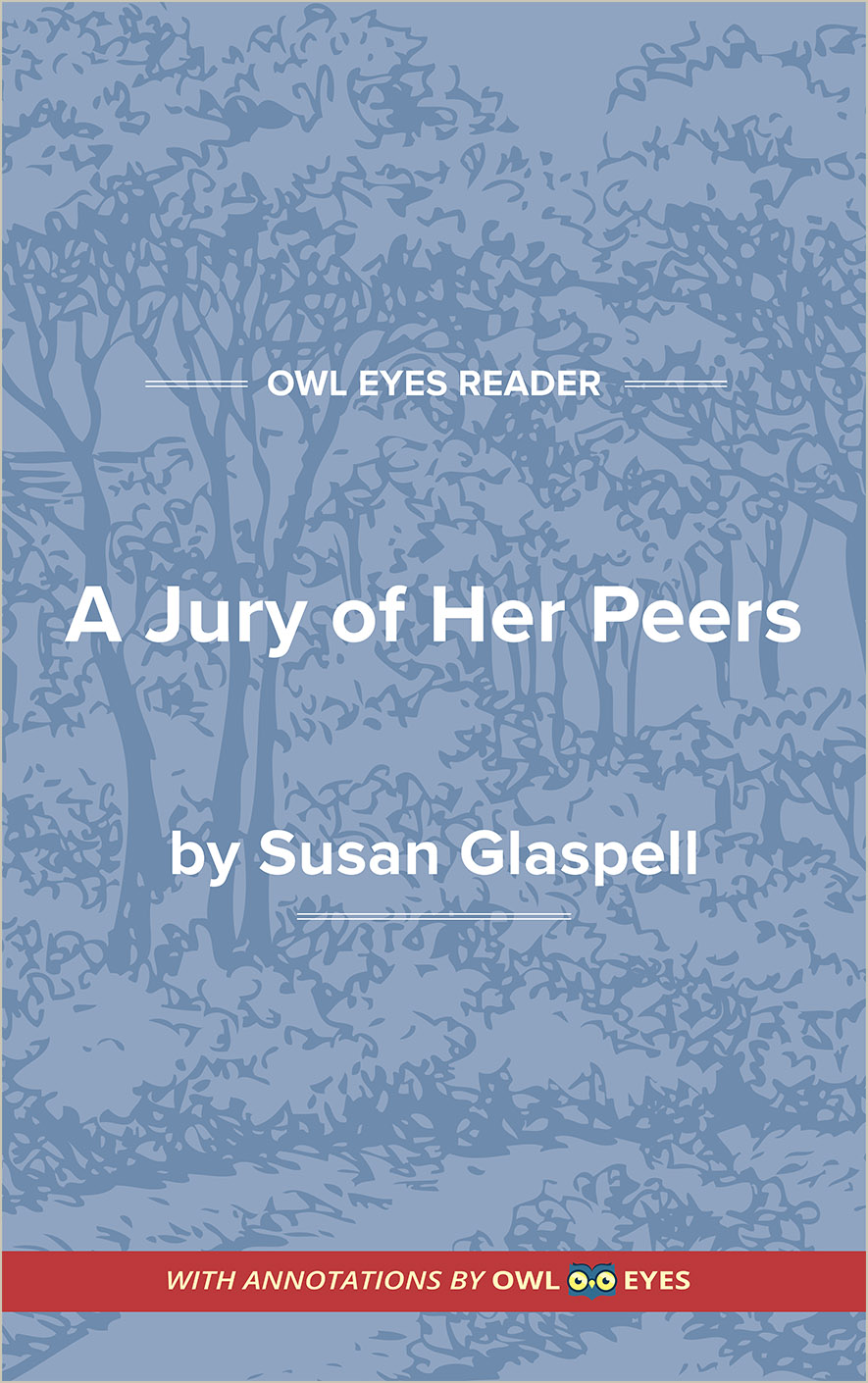Study Guide
Analysis Pages
Summary
Most critics agree that Susan Glaspell’s “A Jury of Her Peers” is, by far, her best short story. First published in Everyweek on March 5, 1917, the work is a faithful adaptation of her play Trifles, produced the year before by the Provincetown Players. Cook had decided to stage two one-act plays for the company. He already had O’Neill’s Bound East for Cardiff (wr. 1913-1914, pr. 1916, pb. 1919) but needed another, and he told Glaspell to write one. She protested because of her lack of experience as a dramatist and the pairing with O’Neill. Reaching into her past as a courthouse reporter in Iowa, she remembered covering a murder trial and her impressions of entering the kitchen of the accused. She had meant to write about the experience as a short story but had never gotten to it.
So I went out on the wharf . . . and looked a long time at that bare little stage. After a time the stage became a kitchen—a kitchen there all by itself. I saw just where the stove was, the table, and the steps going upstairs. Then the door at the back opened, and people all bundled up came in—two or three men, I wasn’t sure which, but sure enough about the two women, who hung back, reluctant to enter that kitchen.
The play was a big success for Glaspell and the Provincetown Players. It is considered one of the finest short pieces written for the American theater and is frequently anthologized.
Glaspell had only to make minor changes in adapting Trifles to a short story. As with some of her other literary work, the main character is never seen. The setting is the Iowa farm of Minnie Wright. Minnie has been charged with murdering her husband. Her guilt in committing the crime is never questioned. Three men—a sheriff, a county prosecutor, and a neighbor—have come to gather evidence...
(The entire page is 473 words.)
Owl Eyes subscribers get unlimited access to our expert annotations, analyses, and study guides on your favorite texts. Master the classics for less than $5/month!

